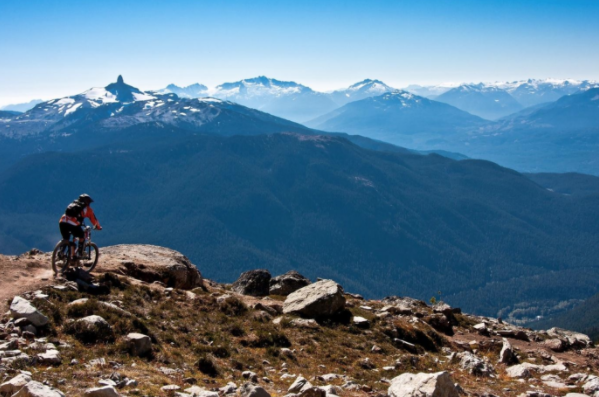Looking to add some adventure to your life? Want to escape from the city and enjoy riding off road? Then it sounds like you would love the adrenaline rush of mountain biking.
There are so many great mountain bikes available for reasonable prices today which make it a great time to be shopping for a new bike.
Here are 5 awesome tips to help you choose the best mountain bike for your riding style, expected terrain and budget.
Tip #1 – Decide your maximum budget up front
There are some incredible mountain bikes available today and some top of the range models could cost you in excess of $10,000!
No need to be alarmed though as you can definitely find a great mountain bike for under 1500.
Deciding your budget up front is important because it will help you narrow your search and to stay within your financial limits.
Tip #2 – Know the differences between hardtail and full suspension mountain bikes and choose the right one for you!
A hardtail mountain bike is one that has front suspension forks, and no rear suspension which makes for a lighter, simpler design.
A hardtail mountain bike has front suspension forks but no rear shock absorber
If you plan to ride on very aggressive trails then the hardtail will be more challenging to ride.
A full suspension bike has both front and rear suspension making it easier to control on very tough terrain and more comfortable for the rider.
The addition of a rear shock absorber does increase the weight and expense of the bike.
If you are looking for a mountain bike for under $1,000 we would recommend choosing a hardtail.
From $1,500 upwards you can find good options for both and ultimately the decision between full suspension and hardtail will boil down to personal preference and the terrain you plan to ride.
What we can say is that full suspension bikes are becoming increasingly popular thanks to advances in modern frame design and the increased confidence they provide on rough terrain.
Tip #3 – Know your wheels
Only a few years back, all mountain bikes were manufactured with 26 inch wheels.
Gary Fisher made a breakthrough in mountain bike design by introducing 29 inch wheels which offered increased traction, smoother rolling and faster speeds once you get them moving.
While many loved the 29 inch wheels, some felt that it made their mtb less agile and manoeuvrable on technical trails and because of this a 27.5 inch (or 650b) wheel size was introduced.
So which one should you choose? We suggest a 27.5 inch wheel for riders who are 5 foot 8 inches or shorter and for those who like a fast, responsive ride.
For most other riders the 29 inch wheel size should be perfect, however it is advisable to test ride your chosen mountain bike before making a purchase.
Tip #4 – Find a mountain bike which meets your specific requirements
You may wish to consider a “fat bike” which is a relatively new breed of mountain bike featuring extra wide tyres and rims (typically ranging between 2.8 and 3 inch tyre width).
“Fat Mountain Bikes” are perfect for riding on snow covered trails
Think of these as the Harley Davidson of mountain bikes, not the lightest or most nimble bike out there but plenty of fun to ride and the extra tyre width provides added grip and comfort which can come in handy for slippery trails or in snowy weather.
If you are a female rider then it is important to find a women’s specific mountain bike which has the right geometry, frame design, wheel sizes etc to suit your body type and riding style.
Tip #5 – Choose the optimal mountain bike frame material
There are 3 main materials used for building mountain bike frames which are aluminium, carbon and titanium.
Aluminium is the most popular material choice and with good reason: it’s relatively cheap, lightweight, doesn’t rust and can be formed to provide a rigid yet lightweight frame.
Carbon and titanium are more exotic (read expensive) materials which tend to be found on more expensive mountain bikes. They both offer enhanced vibration damping qualities and lighter weight which makes for a livelier yet more comfortable ride.
Add The Sports Daily to your Google News Feed!







